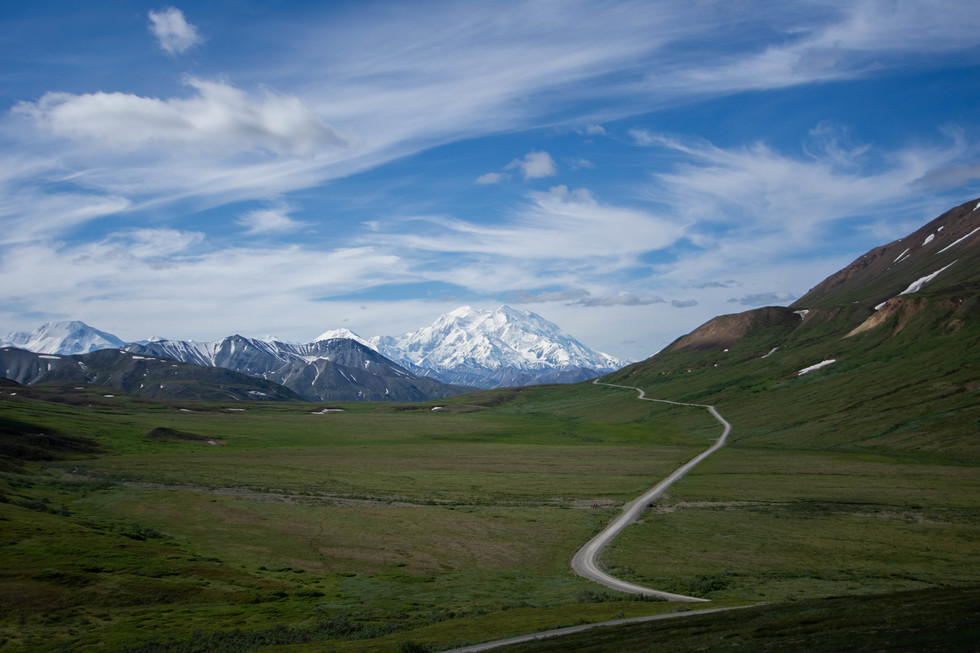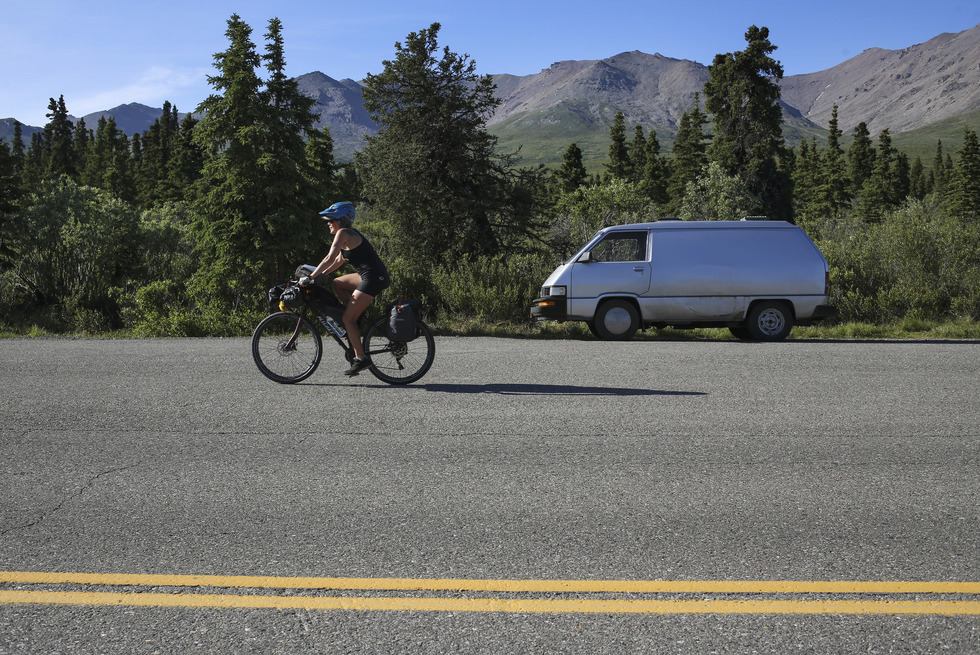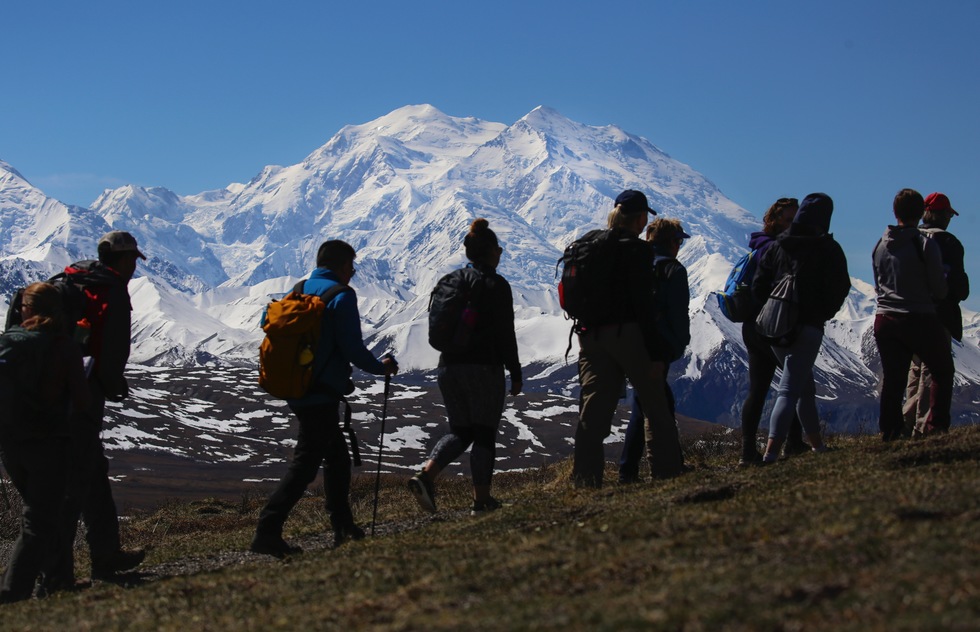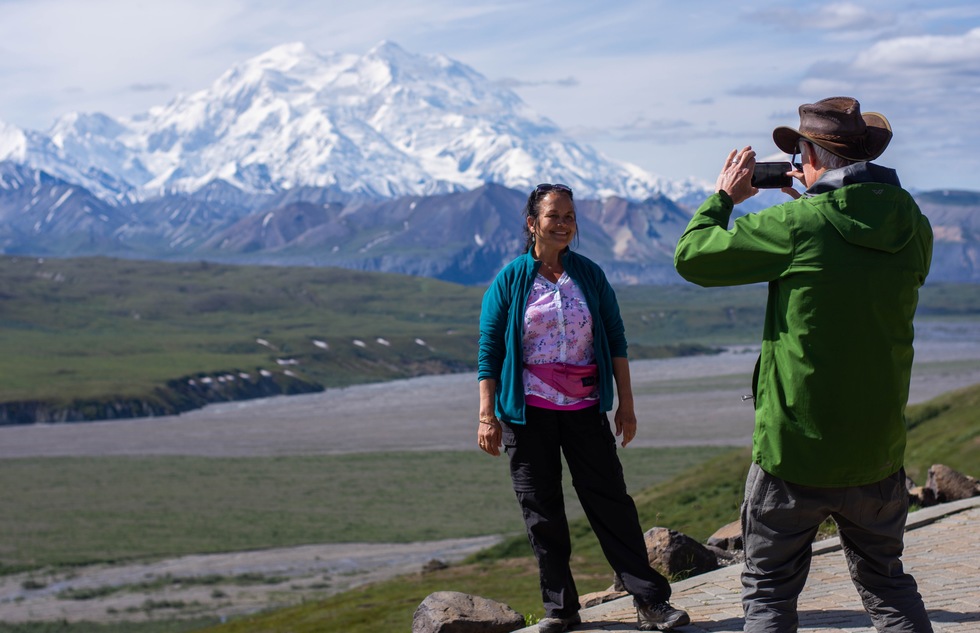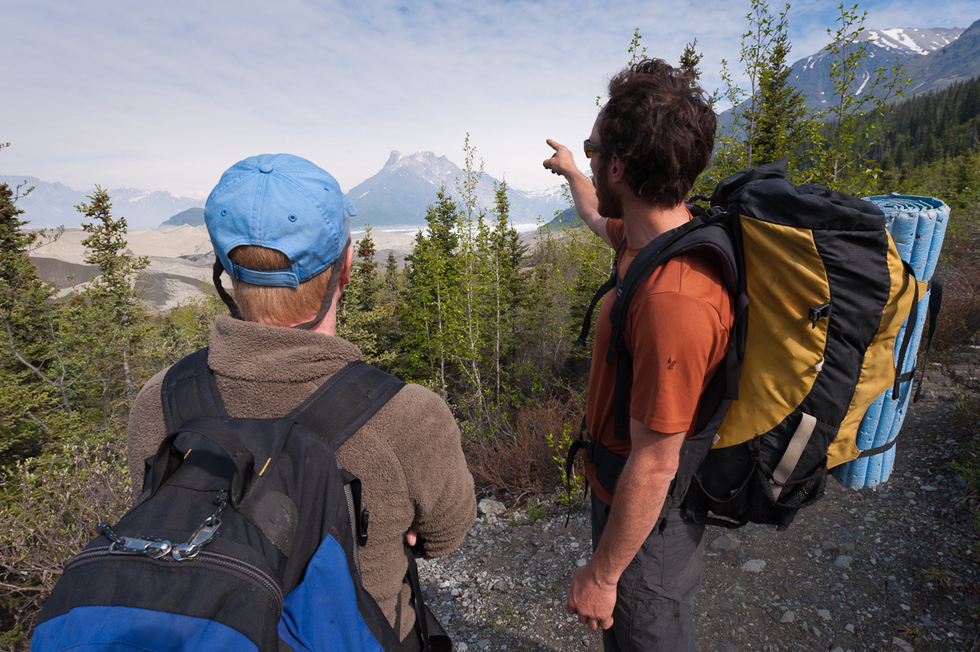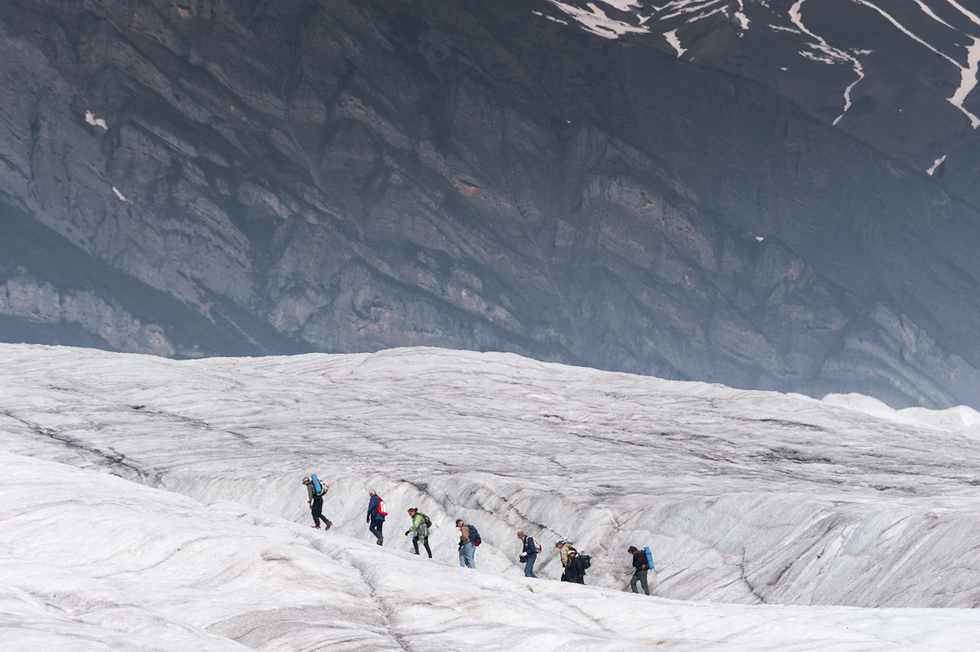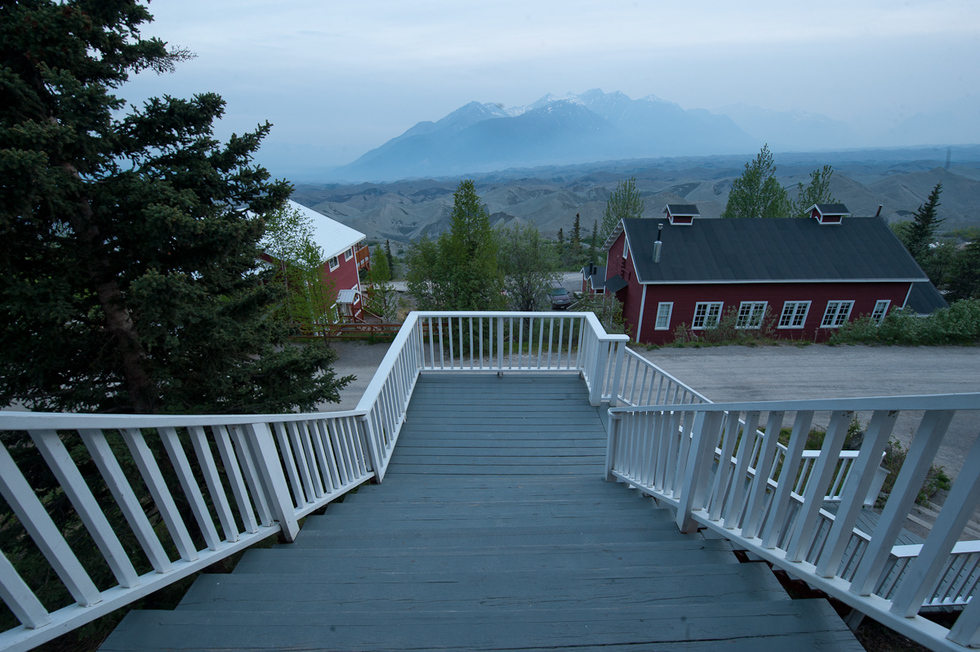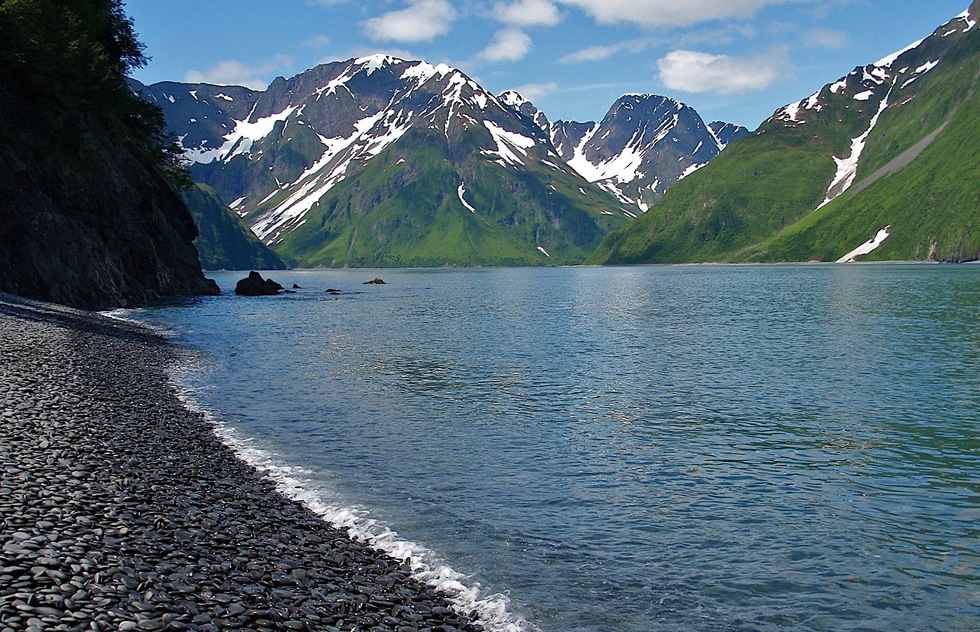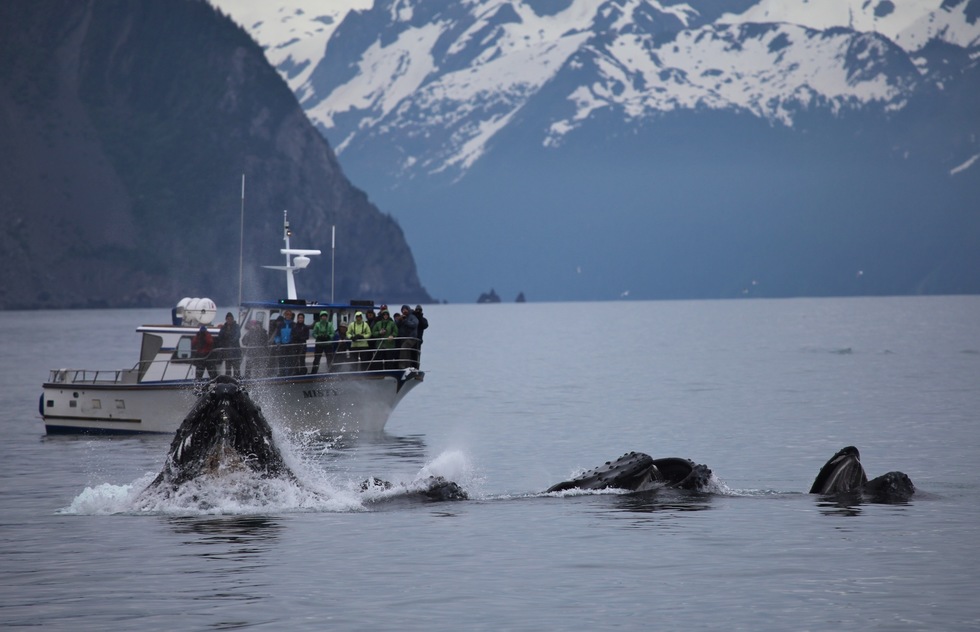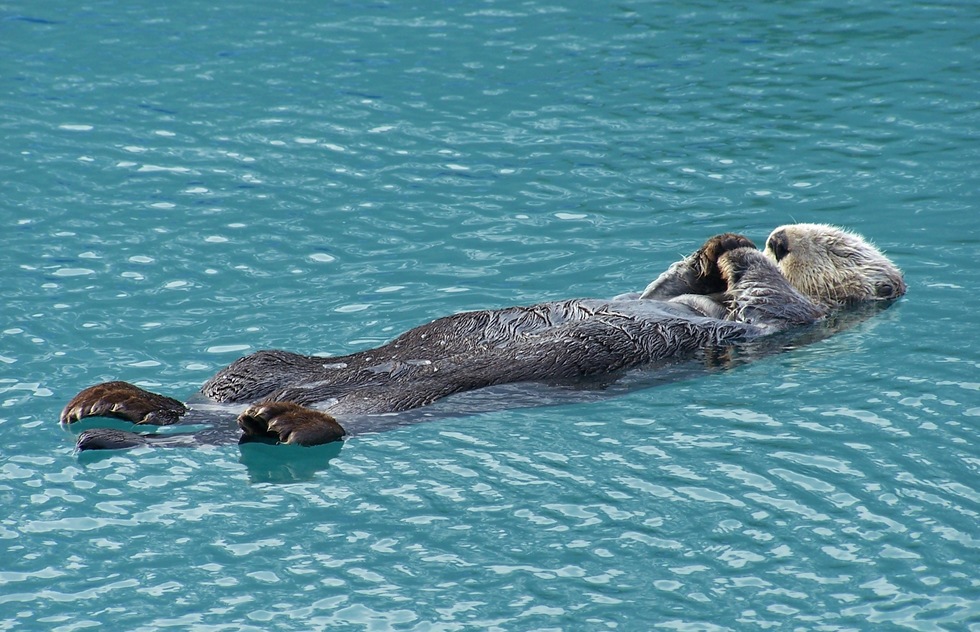Tour Alaska On Your Own: Driving Its National Parks
By Kris CappsAlaska is home to 23 national parks. Many of them are remote and are only reachable by expensive air charter, but luckily, a few of the best ones are accessible by car. From the city of Anchorage, it will take several hours to drive to each of these three parks. But the destinations are well worth the time, and in Alaska, a multi-hour drive can be a spectacular road trip of a lifetime. Choose an experience from these parks: the pristine wilderness and wildlife of Denali (pictured) in the interior, the vastness and grandeur of Wrangell St. Elias National Park in the south, or the rugged ecosystem and rich marine life at Kenai Fjords National Park along the coast. Each one has a unique landscape, and it's in your power to see all of them using the steering wheel of a simple rental car.
Park rangers regularly lead hikes (pictured; schedule at www.nps.gov/dena), but visitors are also free to strike out on their own. Easy and moderate trails wind through spruce and aspen forests from the world-class Denali Visitor Center. But overall, it's a park with no trails, and visitors are encouraged to forge their own paths. Most of the terrain is above the treeline, and you could encounter wildlife, including bears or moose, at any time. Denali is also home to the only working sled dogs in the national park system; demonstrations are given three times a day at the center. For a bird's eye view, flightseeing tours are also available—here, because there are no roads, it's not an extravagance but an essential method of touring. Some carriers are even permitted to land on glaciers. There are six main campgrounds near the road, and all of them should be reserved far ahead of time at ReserveDenali.com.
Tours and shuttle bus trips can last as long as 12 hours round-trip to Wonder Lake, about 90 miles into the park. The time spent on the bus doesn’t feel that long—it's more like a safari, and you'll be busy scanning hillsides and tundra for Alaska's Big Four: grizzly bear, caribou, moose, and Dall sheep (with a bonus for spotting a wolf). With all those pairs of eyes on board, success is likely. Sometimes, grizzly bears meander onto the road, right beside the bus. Go as deep into the park as you can. From the vantage point of Stony Dome, a shuttle stop along the route 60 miles into the park, the snowy peak of Denali takes up the entire horizon.
Wrangell-St. Elias, the largest national park in the United States at 13.2 million acres, is just a five-hour drive from Anchorage, which in Alaska is like being next door. Nine of the 16 highest peaks in America are within its boundaries, so the drive there is filled with unrepeatable views. This park is also known for its history. The richest copper deposit in the world was found here in 1900. To delve deeper into that section of the park, you'll want to drive an additional two to three hours to the McCarthy-Kennicott area. The last 61 miles between Chitina and Kennicott River are on a historic gravel road—for that reason, some rental car agencies prohibit this excursion, so make sure your contract allows for it. (Also check out our feature about the great glaciers of Alaska, some of which are in this park.)
To learn about the prospecting days, the park service leads free programs and guided tours inside the Kennecott Mill, which can be reserved through St. Elias Alpine Guides—which also arranges glacier hikes (pictured)—or you can walk on your own through the old ghost town. But the outdoor adventure is world-class: Raft down the whitewater of the Kennicott River (spelled differently than the mill) or try a stand-up paddleboard tour on Kennicott Glacier Lake with McCarthy River Tours & Outfitters. To really take in the vastness of this place, book a flightseeing tour on lightweight prop planes with Wrangell Mountain Air.
Exploring these historic villages is like stepping back in time, and worth every moment. Chitina was once a bustling railroad station. This community of 125 residents, near the Copper River, where fish wheels turn slowly in the current, is now considered the gateway to the park. Kennecott (spelled differently than the glacier nearby) may be Alaska’s most famous ghost town. Once a bustling company town backed by legendary magnates Daniel Guggenheim and J.P. Morgan, its mines closed abruptly in 1938 and residents left their belongings behind rather than cart them back out of the mountains. Its 40 buildings are being restored by the Park Service, which also leads guided tours. The Kennecott Visitor Center, like most of the amenities around here, is a summer concern, open daily May through September, and the Kennicott Glacier Lodge (pictured), which has a 190 foot-long porch surveying the mountain view, is just steps from the ice. McCarthy is a unique pioneer community in the middle of wilderness with an unpaved main street that's just a couple of hundred yards long. Population? About 30 people. There are no organized tourist attractions there except for a small museum that hearkens back to the mining days. It’s a place to catch your breath, feel the past, and kick back on the deck of the general store.
On the southeast coast of the Kenai Peninsula, Kenai Fjords National Park is a dramatic mountainous landscape where glaciers slowly advance into the North Pacific. The park covers nearly 700,000 acres and includes the colossal Harding Icefield, a mass of ice that may be as deep as a mile that feeds about 40 glaciers that push into classic steep-sided valleys toward the sea. You can drive to its visitor center in Seward from Anchorage in about 2 1/2 hours. Along the way, stop at Exit Glacier, the only glacier in the park that you can drive to yourself. With a one-mile loop hike, you can get close enough to the glacier to touch it. The Exit Glacier Nature Center is also there to help you put the mighty natural wonder in perspective.
Most of Kenai Fjords, which is considered predominantly a marine park, is only accessible by water, so it’s best if you park your car in Seward and explore by boat. Watch for seals, sea lions, and vast numbers of seabirds, like the cartoon-like puffins. Trips depart daily from Seward’s little boat harbor during summer months and range in duration from full day to half day. You can choose to linger in protected coves or venture further west, along the coastline of the park. Guided whale-watching tours with an experienced boat captain are a popular draw; there are frequent sightings of gentle humpbacks (pictured) and majestic orcas. Visiting kayakers should only go out with an experienced guide—these are not waters for beginners. Check Major Marine Tours and Kenai Fjords Tours.
The farther you go into Kenai Fjords, the more you will see. That’s why a full-day boat excursion is recommended, although those prone to seasickness should know that longer tours may take you through some rougher waves. Don’t forget to bring binoculars: Sea otters (pictured) are common, and also keep your eyes peeled for curious seals snoozing on icebergs or popping their heads above the surface of the water to investigate you. Sea lions make a loud snort when they emerge from below. These big creatures are remarkably graceful when swimming, but lumber awkwardly on rocks when they're seeking the sun’s warmth.





